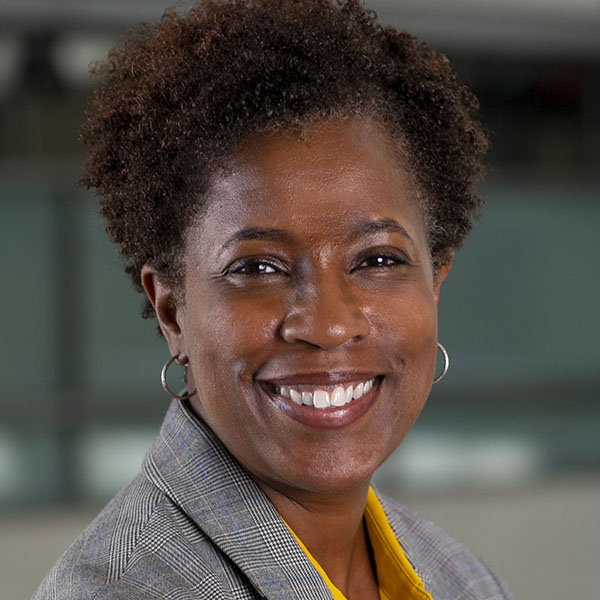By investing in opportunity, we have the ability to empower people to build wealth and create value, to foster revitalization and promote resiliency in places that have experienced disinvestment, to invigorate civic engagement, and to mitigate the risks that poverty presents to our economic system. We are excited to explore ways to invest in opportunity both in this publication and throughout the 2018 Reinventing Our Communities conference.
This investment approach requires building and mobilizing four types of capital as a means to promote economic mobility.
- Financial capital: resources measured in terms of monetary value
- Human capital: the knowledge, experience, ability, and creativity of people
- Physical capital: real assets, including real estate, land, and infrastructure
- Social capital: networks and relationships that connect people, create value and enable change
It is evident that all four types of capital are needed in order for communities and citizens to thrive. Investing in one at the expense of the others does not yield true opportunity. For example, pursuing financial capital while ignoring negative social externalities is costly and does not lead to the goal of value appreciation. A holistic approach that equally invests and builds each of these pillars of capital, however, requires us to address the challenging issues that many of us tend to avoid in our current community development work.
It isn’t easy to create opportunity and achieve equity — doing so requires intentionality and commitment. We hope the insights and inspiration of these leadership pieces will give you the tools and the courage to do so.
Shifting the Paradigms
In anticipation of the eighth biennial Reinventing Our Communities conference, the Federal Reserve Bank of Philadelphia asked experts from the field to share their perspectives on this year’s theme of Investing in Opportunity. Our authors reflect on three key shifts needed in community development practice to effectively address the barriers of the past, meet the challenges of the future and catalyze action in the present.
- Build wealth rather than extract wealth from communities by becoming intentional about issues of equity.
- Leverage new resources by shifting the focus from addressing market failures to also exploring market opportunities.
- Move from short-term, transactional approaches to transformational strategies that foster long-term systems change.
Emerging from each essay and connecting one to the other was the theme of systemic racial inequality and the grave impact that biased laws, policies and attitudes have had on poverty, opportunity, and economic mobility in America. This compilation of bold perspectives from community development leaders speaks to this pivotal inflection point for our industry — an urgent moment that calls us to see our work differently and implores us to change the way we think about and act upon the challenges that are facing many of our communities and threatening our economic future.
As Ben Hecht of Living Cities articulately explains in his essay, American policy and practice has created — and often exacerbates — the disparities that our research shows exist today. Analyses from the Federal Reserve Bank of St. Louis indicates that racial disparities in economic security persist because of deeply rooted structural and systemic factors underlying our economic system, even when controlling for educational attainment. Senior economic advisor William R. Emmons found that between 1992 and 2013, a college degree predicted rising levels of familial wealth for whites and Asians but declining levels for blacks and Hispanics during the same period.1 We know, however, that systems are manmade and thus can be changed to foster a more equitable future. It will take intentional and collective action to dismantle such systems.
In moving from research to action, Michael McAfee of PolicyLink powerfully describes how addressing these disparities begins not by discussing equity in theory, but by transforming our own practices. We do this through genuine engagement with leaders in the communities impacted by our work, listening to their needs and perspectives and working together to craft solutions. Incorporating these voices can help build the genuine social capital needed to develop structural change.
Laurel Blatchford of Enterprise Community Partners discusses market failures that have contributed to poverty while exploring real solutions that can be seen as potential market opportunities. She challenges us to address the ways that market bias, such as redlining, has led to market failures,2 while simultaneously taking a market opportunity lens to view these issues through strategies that build wealth — rather than extract wealth — from communities. Unlike lenders who are called to assess risk and probe community deficits, we should instead examine the long-term return potential of asset-based approaches that empower and foster economic independence.
Bringing these ideas from theory to practice, Ben Seigel of Johns Hopkins 21st Century Cities Initiative provides a case study of Baltimore’s response to civil unrest following the death of Freddie Gray. Ben provides lessons learned and tools for other communities struggling with challenges similar to Baltimore’s. He describes how youth have the potential to be the solution if we seize the opportunity to effectively invest in their human capital potential.
Moving Forward
At the Federal Reserve Bank of Philadelphia, we are engaged in the work of advancing opportunity through a new strategic initiative, the Economic Growth and Mobility Project (EGMP). Through Research in Action Labs, the EGMP brings evidence to bear on challenges facing communities in the Third Federal Reserve District and works with those communities to form catalytic partnerships and pilot innovative solutions. Whether exploring equitable transit access in northeast Pennsylvania, workforce development funding in Philadelphia, or job creation efforts across the Third Federal Reserve District, our ultimate goal is to provide fertile ground for building and investing in human, financial, physical, and social capital to foster economic mobility and economic growth in our region. We know that these two things are inextricably linked: Sustainable economic growth includes all citizens and requires innovative partnerships and new ideas.
To succeed in that ambitious goal, we must ask the right questions to inform policy, practice, and investments. We cannot effectively research these issues without explicitly calling them out, which is why race consciousness versus color blindness is essential. It is impossible to dismantle something if you are blind to it. The thought pieces herein challenge us to not allow ourselves as leaders to be blind to bias in the market or failures in our system — as we know, the data tell a compelling story, but we must have the courage to look at it head-on.
The views expressed here do not necessarily represent the views of the Federal Reserve Bank of Philadelphia or the Federal Reserve System.
[1]William R. Emmons and Bryan J. Noeth, “Why Didn't Higher Education Protect Hispanic and Black Wealth?” In the Balance, Federal Reserve Bank of St. Louis, 2015, available at https://www.stlouisfed.org/publications/in-the-balance/issue12-2015/why-didnt-higher-education-protect-hispanic-and-black-wealth.
[2]Tracy Jan, “Redlining was banned 50 years ago. It’s still hurting minorities today.” The Washington Post, March 28, 2018, available at https://www.washingtonpost.com/news/wonk/wp/2018/03/28/redlining-was-banned-50-years-ago-its-still-hurting-minorities-today/?noredirect=on&utm_term=.6faf58d8baf1.

